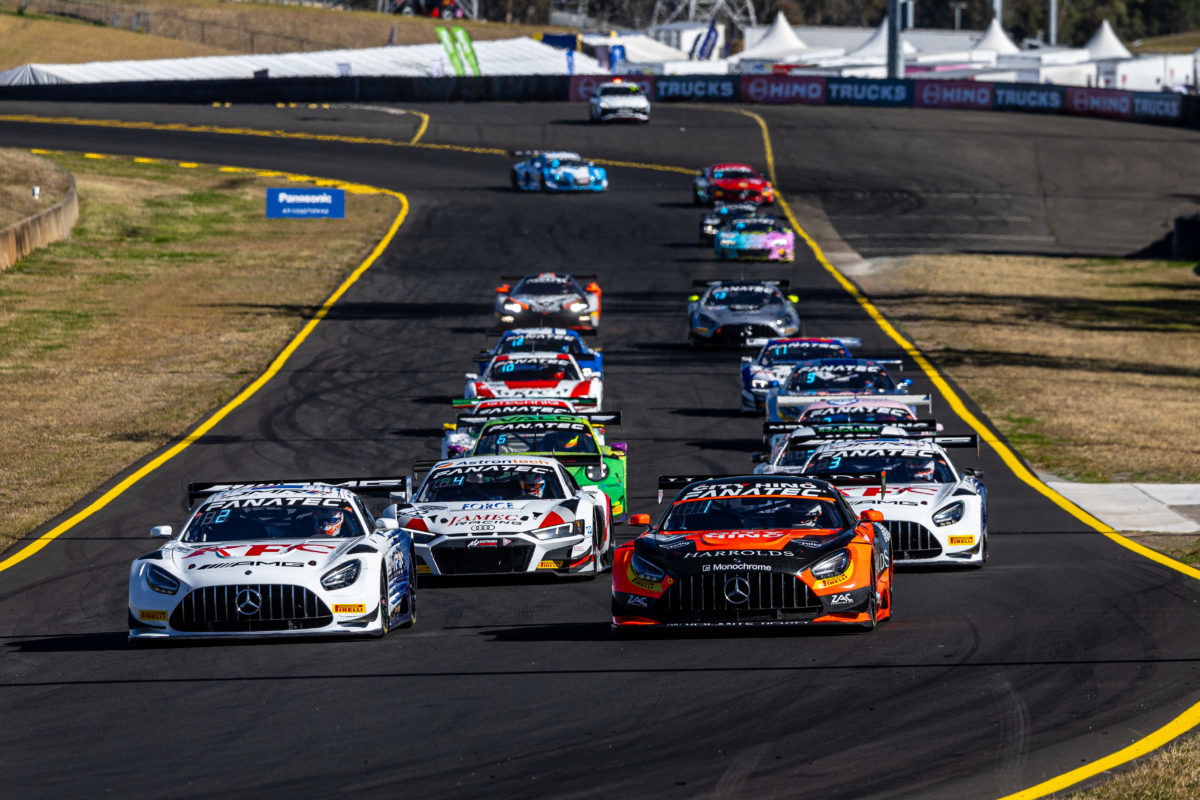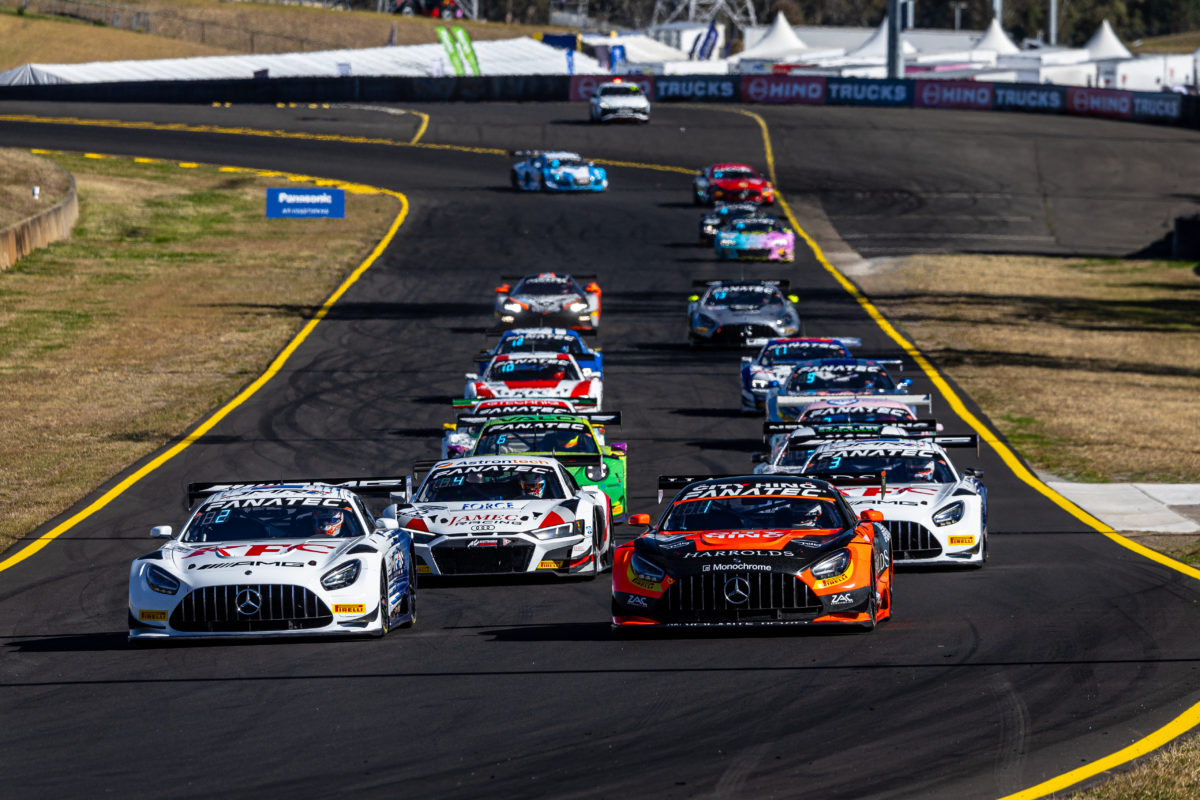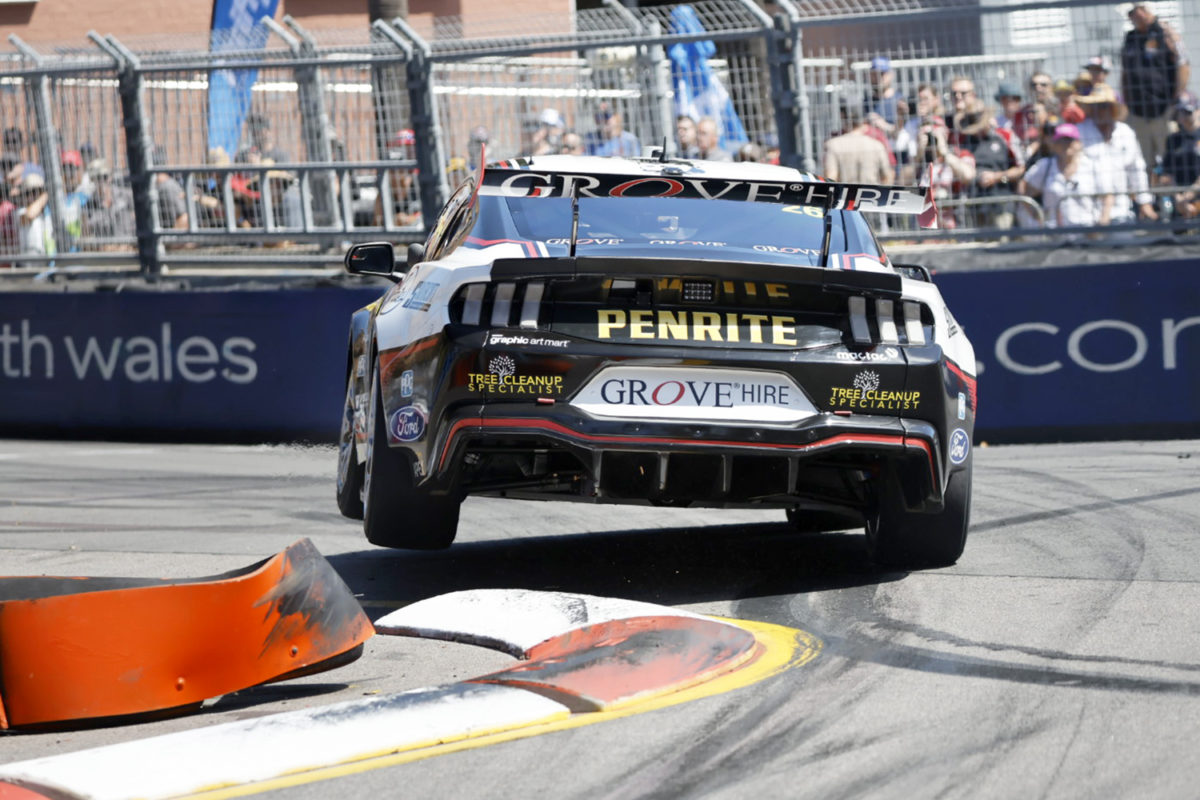

I’ve long ago lost count of the number of people who’ve suggested to me that Supercars should be running GT3 cars in place of the current Gen3 cars.
It’s an interesting idea in theory but, unless the Supercars Championship were to radically change, it’s not a viable one.
I’ll try to explain why.
First of all, it’s certainly tempting to be looking at the GT3 world at the moment. It is the most successful, production-based, race car set of technical regulations at the moment and is likely to remain so for the next decade.
It’s an FIA formula, so it’s not owned by any one promoter. Hence cars are run in various SRO series around the world as well as IMSA, DTM and, in future, Le Mans.
Besides the exotica such as McLaren, Aston Martin, Ferrari, Lamborghini, AMG, Porsche, etc that currently run, there are new cars coming from Chevrolet, Ford, and Toyota. There’s plenty of choice and variety, in other words.
Moreover, generally speaking, GT3 cars are reliable and mechanically robust. They’re normally designed for both sprint racing and endurance events of up to 24 hours, so they tend to have pretty good service intervals as well.
So far, so good. But…
Firstly, the cars themselves are getting, like all race cars, more and more expensive to buy. This is due to post-COVID inflation as well as exchange rate effects.
Teams here already moan about the cost of a new Gen3 car, but the latest new GT3 models won’t land here for less than $1.2 million excluding tax, and that’s a bare car. Even new versions of the older models are $1 million plus.
Of course, there are used cars out there around the world, but they often come with the need for updates and/or major services.
Secondly, a GT3 car is cheap to run… until you hit something. And then the sky is the limit in terms of repair costs.
An accident that would create a $20,000 bill with a Gen3 car can certainly be five times that for a GT3 car. Just the minor door-to-door rubbing from a lively race can, and does, often cost $25,000-plus in parts to put right.
The fact is that a major accident in a GT3 car can readily lead to a new shell being required or even writing off the car and just salvaging some parts. Bear in mind that, over the years, very few Supercars have actually been written off. One team alone in Asian GT this year wrote off two cars over consecutive weekends. That’s in a six-event series on wide, open, tracks.
All spare parts are homologated and must almost always be sourced from the manufacturer. It’s the same scenario as the cost of building a road car from spare parts – it would cost an awful lot more than buying the complete car.
If Supercars did go to GT3, and without making major changes to the Championship, I’d anticipate that half the teams would be out of business by Darwin as a result of parts costs alone.
Thirdly, street tracks such as Newcastle, Adelaide, and the Gold Coast would have to go, or be hugely modified and potentially lose a lot of their character in the process, for two reasons.

One, the repair bills would be astronomical as there’s so much capacity for decent sized shunts and, two, GT3 cars are not designed to jump over kerbs. And kerbs are a massive part of what makes those street courses special.
Don’t make the mistake, as some have, of judging whether GT3 cars are suitable for the average street track based on what we’ve seen in the Australian GT Championship over the years. Once Supercars teams and drivers are running these cars, the level of aggression and competition would ramp up out of sight. DTM is living proof of that.
Even without shunts, the repairing and replacement of the splitters and floors would be out of control at these tracks, in particular.
Fourthly, it’s practically impossible to effectively limit testing. That’s because there are hundreds of GT3 cars running around the world. Therefore, the richer teams and/or the better drivers are always going to have a leg up on the poorer end of pit lane. Currently DTM are racking their brains as to how to deal with this issue, where some teams are continually testing and using huge amounts of tyres.
Finally, there’s not many places in Australia where the track layouts lend themselves to good racing by such aerodynamically influenced cars. Even at Bathurst, it’s very difficult for GT3 cars to pass, let alone at the likes of Darwin, Perth, QR, SMSP, etc if the cars are all being driven by pro drivers and run by pro teams.
In Asia, by way of contrast, we race GT3 cars on wide open, multi-line tracks for the most part and, combined with greatly varying driver standards, these can, and do, create racing opportunities.
So, if Supercars were faced with, for one reason or another, a total lack of choice as to what to race and were effectively forced to run GT3, what changes would need to be made to keep the show on the road and the teams in business?
Those street circuits that I mentioned would have to either be very heavily modified or scrapped.
The calendar would probably be topped out at 10 events to keep a lid on costs. DTM, in a much bigger market than Australia, had an eight-event schedule this year.
There’d have to be extremely tightly enforced rules around car-to-car contact. “Rubbing is racing” is likely to just prove too expensive, as some DTM teams have found over the last couple of years.
And all the stakeholders would have to accept the concept of BoP; Balance of Performance. If anyone thinks that this would be less onerous than Technical Parity, they’re kidding themselves.
I can tell you from direct experience that the shenanigans and politics of running with BoP in any professional series (as opposed to Pro-Am) are often a nightmare.
So, on the one hand, the idea of running GT3 Mustangs, Corvettes, and Toyotas against each other in the premier Australian series does sound attractive, but that would come with a ton of baggage that I, for one, would like to stay away from if at all possible.
Supercar race cars, be they the original Larry Perkins-inspired post-Group A cars of the mid/late-1990s, the Project Blueprint cars of the noughties, the Car of the Future cars of the last decade or, indeed, the current Gen3 cars, have evolved the way they have to suit the Australian racing landscape.
A Supercar is the kangaroo of the motor racing world. It has grown into, and adapted to, its environment.
Of course, there are details that could, and should, be changed, such as the tyre and the lack of a limited slip differential, for instance, but there’s a hell of a lot to be said for the current cars.
I’d like to think that, in the Supercars HQ, there’s strategy document that covers, at the very least, the next five years of car and model evolution to ensure that we can keep this truly unique formula going for as long as possible.


















